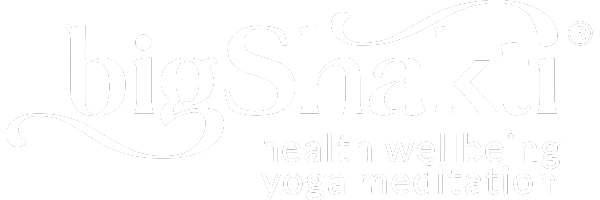Yoga of Mental Health Workshops → More Info
Important Research Articles on Yoga Relaxation Meditation

The Harvard Researcher Herbert Benson of The Benson-Henry Institute for Mind-Body Medicine did the following research into relaxation and mind-body medicine at the Massachusetts General Hospital, USA.
Mind-body medicine is not a complementary or alternative treatment, as it is part of the present-day holistic systems of orthodox medicine. However, it works well with and supports all complementary and alternative therapies and natural remedies. In fact, relaxation and meditation are the ultimate natural solutions.
Herbert Benson
Herbert Benson is a pioneer in mind-body medicine. His clinical work and research are based on the ability of various techniques and processes to activate the relaxation response. Benson has explored various meditative techniques, such as yoga, diaphragmatic breathing, meditation, repetitive prayer, chi gong, tai chi, progressive muscle relaxation, exercise, and knitting.
Big Shakti's Techniques
Big Shakti's techniques incorporate relaxation, meditation, and diaphragmatic breathing. Our Relaxation Meditation Course is one of the best programs for beginners and more advanced meditators who wish to dive deep into relaxation. This foundation practice supports you in moving on to more advanced meditation practices because relaxation is an essential skill for meditation.
We have also developed sophisticated forms of diaphragmatic breathing as part of Big Shakti's guided meditation techniques: Prana and Pranic Healing, Core Strength, Calm Mind, The Chakras, and Ajapa Japa. We have used these techniques to treat and manage the conditions listed below.
These techniques have been combined into the Life Force Meditation Series, which combines the main techniques from the above-mentioned guided meditation training programs into one mega program. The Life Force Meditation Series is designed to guide you through a journey of energy cultivation, resilience, and heightened awareness with 3.5 hours of expert instruction.
Aging
- Galvin JA, Benson H, Deckro GR, Fricchione GL, Dusek JA. (2006). "The relaxation response: reducing stress and improving cognition in healthy aging adults." Complement Ther Clin Pract 12(3): 186-91.
Anxiety
- Day, RC and Sadek, SN(1982). "The effect of Benson's relaxation response on the anxiety levels of Lebanese children under stress." J Exp Child Psychol 34(2):350-6.
- Benson, H, Frankel, FH et al. (1978). "Treatment of anxiety: a comparison of the usefulness of self-hypnosis and a meditational relaxation technique. An overview." Psychotherapy Psychosom 30(3-4):.229-42
Cancer
- Beard C, Stason WB, Wang Q, Manola J, Dean-Clower E, Dusek JA, Decristofaro S, Webster A, Doherty-Gilman AM, Rosenthal DS, Benson H (2010). "Effects of complementary therapies on clinical outcomes in patients being treated with radiation therapy for prostate cancer." Cancer. 2010 Aug 27. [Epub ahead of print]
Headache
- Fentress, DW, Masek, BJ et al. (1986). "Biofeedback and relaxation-response training in the treatment of pediatric migraine." Dev Med Child Neurol 28(2):139-46.
- Benson, H, Klemchuk, HP et al. (1974). "The usefulness of the relaxation response in the therapy of headache." Headache 14(1):49-52.
- Benson, H, Malvea, BP et al. (1973). "Physiologic correlates of meditation and their clinical effects in headache: an ongoing investigation." Headache 13(1):23-4.
Heart Disease
- Benson H, Dusek JA, Sherwood JB, Lam P, Bethea CF, Carpenter W, Levitsky S, Hill PC, Clem DW Jr, Jain MK, Drumel D, Kopecky SL, Mueller PS, Marek D, Rollins S, Hibberd PL. (2006). "Study of the Therapeutic Effects of Intercessory Prayer (STEP) in cardiac bypass patients: a multicenter randomized trial of uncertainty and certainty of receiving intercessory prayer." Am Heart J 151(4): 934-42.
- Peng, C, Henry, I, Mietus, J, Hausdorff, J, Khalsa, G, Benson, H, Goldberger, A. (2004). "Heart rate dynamics during three forms of meditation" Int J Cardiol 95: 19-27.
- Mittleman, MA, Maclure, M, et al. (1995). "Triggering of acute myocardial infarction onset by episodes of anger. Determinants of Myocardial Infarction Onset Study Investigators." Circulation 92(7):1720-5.
- Benson, H, Alexander, S et al. (1975). "Decreased premature ventricular contractions through use of the relaxation response in patients with stable ischaemic heart disease. "Lancet 2(7931):380-2.
High blood pressure
- Dusek JA, Hibberd PL, Buczynski B, Chang BH, Dusek KC, Johnston JM, Wohlhueter AL, Benson H, Zusman RM. (2008). "Stress management versus lifestyle modification on systolic hypertension and medication elimination: a randomized trial." J Altern Complement Med 14(2): 129-38.
- Leserman, J, Stuart, E, et al. (1989). "Nonpharmacological intervention for hypertension: Long term follow up." J Cardiopulmonary Rehabil 9:316-24.
- Stuart, EM, Caudill, M et al. (1987). "Nonpharmacological treatment of hypertension: a multiple-risk-factor approach." J Cardiovasc Nurs 1(4):1-14.
- Shapiro, AP, Benson, H, et al. (1979). "The role of stress in hypertension." J Human Stress 5(2):7-26.
- Benson, H, Kotch, JB et al. (1978). "Stress and hypertension: interrelations and management." Cardiovasc Clin 9(1):113-24.
- Benson, H(1977). "Can hypertension be induced by stress? A case discussion." J Human Stress 3(1):4-11.
- Benson, H, Rosner, BA et al. (1974). "Decreased blood pressure in borderline hypertensive subjects who practiced meditation." J Chronic Dis 27(3):163-9.
- Benson, H, Rosner, BA et al. (1974). "Decreased blood pressure in pharmacologically treated hypertensive patients who regularly elicited the relaxation response." Lancet 1(7852):289-91.
Irritable Bowel Syndrome
- Keefer, L and Blanchard, EB (2002). "A one-year follow-up of relaxation response meditation as a treatment for irritable bowel syndrome." Behav Res Ther 40(5):541-6.
- Keefer, L and Blanchard, EB (2001). "The effects of relaxation response meditation on the symptoms of irritable bowel syndrome: results of a controlled treatment study." Behav Res Ther 39(7):801-11.
Infertility
- Domar, AD, Clapp, D, et al. (2000). "Impact of group psychological interventions on pregnancy rates in infertile women." Fertil Steril 73(4):805-11.
- Domar, AD, Clapp, D, et al. (2000). "The impact of group psychological interventions on distress in infertile women." Health Psychol 19(6):568-75.
- Domar, AD, Zuttermeister, PC et al. (1993). "The psychological impact of infertility: a comparison with patients with other medical conditions." J Psychosom Obstet Gynaecol 14 Suppl:45-52.
- Domar, AD, Broome, A, et al. (1992). "The prevalence and predictability of depression in infertile women." Fertil Steril 58(6):1158-63.
- Domar, AD, Zuttermeister, PC et al. (1992). "Psychological improvement in infertile women after behavioral treatment: a replication." Fertil Steril 58(1):144-7.
- Domar, AD, Seibel, MM et al. (1990). "The mind/body program for infertility: a new behavioral treatment approach for women with infertility." Fertil Steril 53(2):246-9.
Insomnia
- Jacobs, GD, Benson, H, et al. (1996). "Perceived benefits in a behavioral-medicine insomnia program: a clinical report." Am J Med 100(2):212-6.
- Jacobs, GD, H., B et al. (1993). "Home-based central nervous system assessment of multifactor behavioral intervention for chronic sleep-onset insomnia." Behav Ther 24:159-74.
- Jacobs, GD, Rosenberg, PA et al. (1993). "Multifactor behavioral treatment of chronic sleep-onset insomnia using stimulus control and the relaxation response. A preliminary study." Behav Modif 17(4):498-509.
Menopause
- Conboy, L, Domar, A, et al. (2001). "Women at mid-life: symptoms, attitudes, and choices, an internet based survey." Maturitas 38(2):129-36.
Pain
- Schaffer, SD and Yucha, CB(2004). "Relaxation & pain management: the relaxation response can play a role in managing chronic and acute pain." Am J Nurs 104(8):75-6, 78-9, 81-2.
- Caudill, M, Schnable, R et al. (1991). "Decreased clinic use by chronic pain patients: response to behavioral medicine intervention." Clin J Pain 7(4):305-10.
- Kutz, I, Caudill, M et al. (1983). "The role of relaxation in behavioral therapies for chronic pain." Int Anesthesiol Clin 21(4):193-200.
Pre-menstrual Syndrome
- Goodale, IL, Domar, AD et al. (1990). "Alleviation of premenstrual syndrome symptoms with the relaxation response." Obstet Gynecol 75(4):649-55.
Women's Health
- Deckro, JP, Domar, AD et al. (1993). "Clinical application of the relaxation response in women's health. AWHONNS" Clin Issues Perinat Womens Health Nurs 4(2):311-9.
Categories
- Yoga (13)
- Yoga Tantra (20)
- Meditation (23)
- Meditation Techniques (31)
- Ayurveda (3)
- Carl Jung (5)
- Chakras (14)
- Consciousness (17)
- Diseases (7)
- e-mag (9)
- Everyday Wisdom (6)
- Life Purpose (8)
- Mantras (18)
- Mental Wellness (44)
- Podcast (23)
- Prana - The subtle breath (14)
- Relaxation (18)
- Shadow Self (7)
- Spirituality (12)
- Symbols (2)
- Third Eye - Ajna Chakra (7)
- Wisdom (2)
- Yoga Nidra (12)
- Yoga Philosophy (16)
- Yoga Psychology (19)
- Yoga Therapy (41)
- Yoga Meditation Research (3)
- Articles by Jayne Stevenson (14)
- Articles by Swami Shankardev (25)
- Stress Management (11)
- Emotion (3)
- Self-Awareness (1)
- Self-Regulation (1)
- Healing (3)
2025 Yoga of Mental Health Workshops
- Sāṁkhya Philosophy & Mental Health: A Yogic Path to Holistic Well-being
- Uncovering the Roots of Mental Illness: Insights from the Gita & Patanjali
- Restoring Self-Regulation: Yogic Techniques for Emotional Resilience & Inner Strength
- Mantra Therapy: Transforming Thought Patterns for Emotional Healing & Mental Wellbeing






